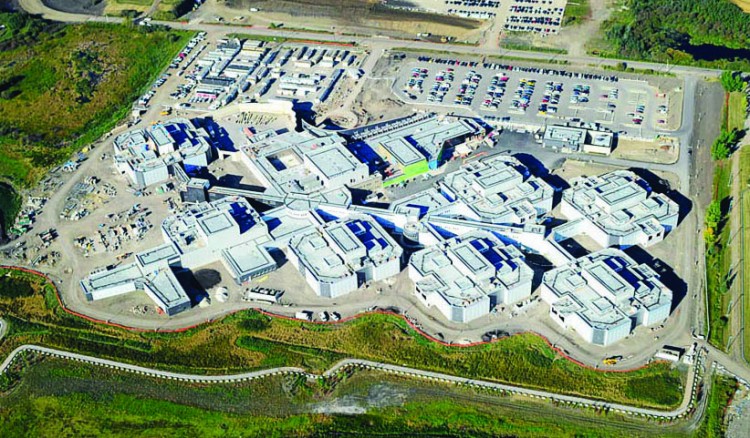The new remand centre being built in Edmonton—the biggest of its kind in Canada—can’t come too soon after yet another inmate assault in the current, notoriously overcrowded facility.
An injured man was taken to hospital on Jan. 7 after an altercation with another inmate, but refused to co-operate with police. He was treated and later sent back to the jail.
The current centre has been plagued with violence, including four homicides in the past decade, blamed primarily on overcrowding. Built in 1979 for 388 inmates, today it houses about 800 accused criminals awaiting trial or transfer to another prison to serve their sentence.
The new $568 million Edmonton Remand Centre is slated to open by spring 2013. Mike Tholenaer, executive director of the new facility, says he expects the move to decrease inmate violence significantly.
“Given the size of the current facility, and that we’re triple-bunking that facility because it’s over-crowded, it’s extremely difficult to appropriate any good property to keep [rival inmates] separate,” Tholenaer says.
“This new centre is obviously much, much larger and has many more living units within it. That allows us to put inmates in different units so that we can keep them separate when we need to.”
He says a major issue in the current centre is that rival gang members are in close proximity, leading to a tense environment that can easily spark conflict.
“The current remand centre was built in an era where we didn’t have gangs, or very little. Way back in the day you had the odd motorcycle gang issue, but nothing like today. So really the only way you can properly deal with those gang issues is by separating [the gangs].”
The biggest change for the new centre will be its adoption of the “direct supervision model,” which removes physical barriers between staff and inmates. This allows staff to build relationships with prisoners and keep a close watch on potential conflict.
Tholenaer says this model is based on best practices that have been proven effective throughout North America, and creates a safer environment for staff.
“When staff are placed behind glass they really don’t have a good sense of what’s going on in living units. You don’t have that ability to get that sixth sense that there’s something going on that shouldn’t be,” he says.
“[The new model] provides that dynamic supervision that allows staff to interact with offenders, be able to deal with issues and problems on living units immediately as they start to arise.”
Tholenaer adds that in addition to proper staff training, the most effective way to reduce violence is to place inmates appropriately when they arrive at the centre, and identify whether they have gang affiliations, addictions, mental health issues, etc.
“It’s a matter of the correct classification of inmates when they’re first brought in the facility, and obviously the correct placement within the facility. So that’s done through a proper classification and security assessment process on admission,” he says.
The new facility, which began construction in 2007 in north Edmonton, covers 16 hectares, equivalent to 27 CFL football fields. It will be able to hold about 2,000 inmates.
If Bill C-10—the Conservatives’ “tough on crime” legislation—goes through, Tholenaer expects it to have an impact on the centre’s population.
“We, as well as all the other jurisdictions throughout the country, have been working on assessing what those impacts are. But certainly that omnibus bill will have an impact on our provincial populations.”
Alberta’s remand centre populations have increased by over 25 percent over the past five years. In 2006 the average daily inmate population was 2,374; by 2011 it was 2,985.
Tholenaer thinks there are a number of factors contributing to increasing inmate numbers, such as enforcement practises by police agencies, changes in legislation, increasing complexity of court cases, and general population increases.





